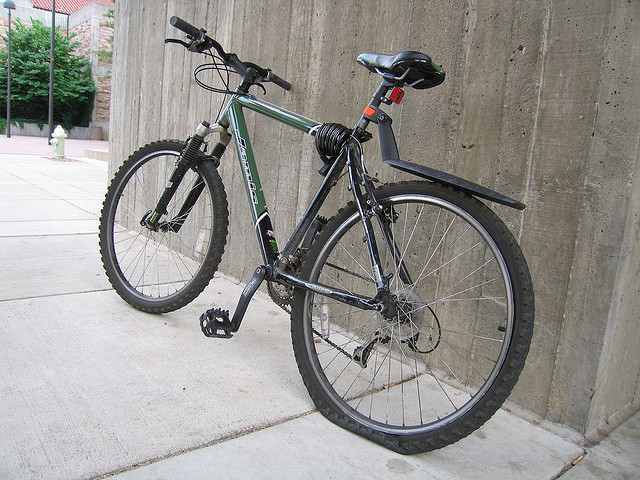 By checking your own bike for basic mechanic issues on a regular basis, you can help prevent further problems from developing in the future. While there may be some problems too serious for a bike amateur to handle, you may find that you are better at fixing broken bike parts than you thought!
By checking your own bike for basic mechanic issues on a regular basis, you can help prevent further problems from developing in the future. While there may be some problems too serious for a bike amateur to handle, you may find that you are better at fixing broken bike parts than you thought!
Check your own tires each time you ride
This is crucial because riding on deflated tires will lead to flats and damaged wheels. Tires that are under-inflated make riding much more difficult because you have to pedal harder to get the same result you would with a healthy tire. Filling your tires with air will save your bike big damage down the road. Check your tire pressure with a pressure gauge—you should see the correct psi printed on the outside rim of each tire. Replace the tire or tire tube after discovering what caused the leak or flat.
Watch your chains
Another way you can perform do-it-yourself bike checks is to monitor the status of your bike chains. If the chains are too dry, they will wear out quickly and cause damage to your bike. Before riding, back-pedal and listen for any squeaking sounds. If the chain appears dry, apply a generous amount of fresh oil to the links.
Test your seat and handlebars
Even if you are the only person who rides your bike, it is still possible that your seat and/or handlebars have become loose and dislodged. If you start biking without paying attention to the height of your bike, you could end up too high or too low from the ground and lose control as you pedal. Make sure your bike is ready for you and ready to support your body before you begin a 100-mile trek.
Try out your brakes
If your bike suffers brake failure during a ride, you will undoubtedly crash and potentially injure yourself and others. Do everything you can at home before you ride to test your brakes and make sure they are functioning properly. Squeeze each break several times, paying close attention any abnormalities or uneven patches. If you suspect a problem that you alone cannot fix, take your bike into a professional. Intentionally riding on a bike that has faulty brakes can be a literal death wish for the cyclist. When in doubt, just take the day off.
Feel around for lose elements
If something on your bike has become loose, it may be easy to locate due to a clinking or scraping sound. Some lose parts, however, are more difficult to spot than others. Before and after your ride, run your hands along your bike frame. Check for any wheels, chains, accessories, spokes, bolts, or other parts that are not as attached to the bike as they should be. Loose bike parts can cause wear and tear on your bike, and even lead to a crash. Take the extra few minutes necessary to ensure your safety.
Source: wikiHow
Photo Courtesy of Andrew Magill and Creative Commons
